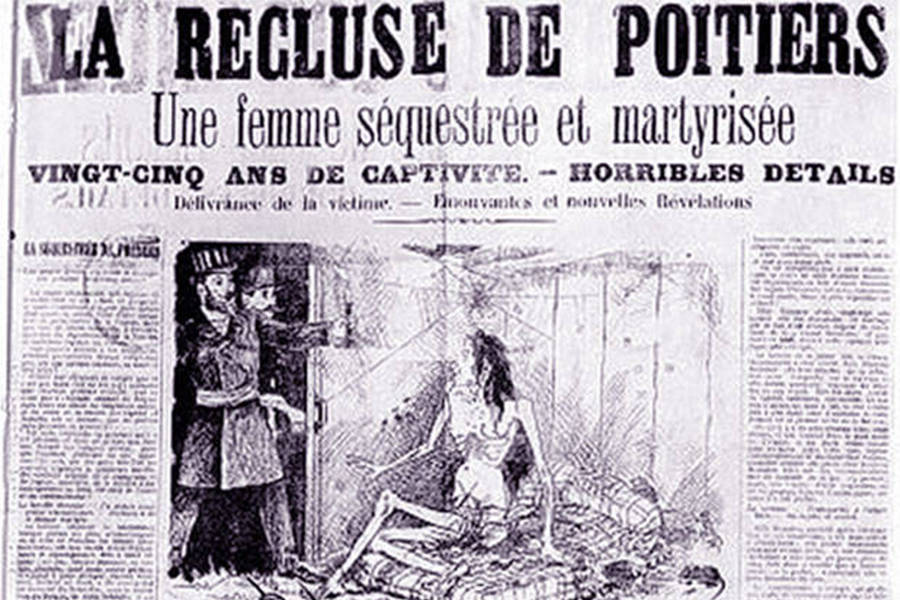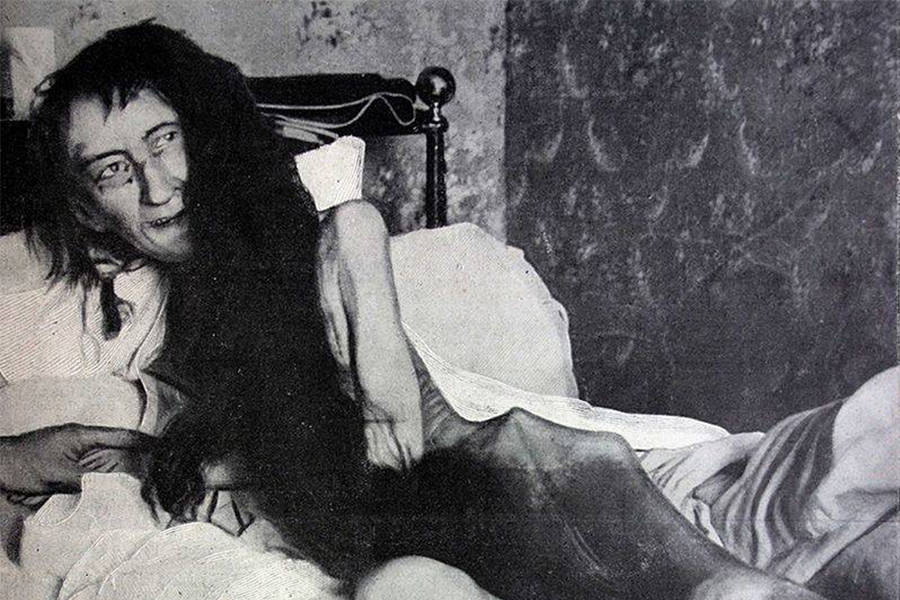Last updated on July 22nd, 2022 at 09:09 pm
Tales of parents taking measures to prevent their children from marrying someone they do not approve of span the spectrum of human history. But in some cases, the measures they take are so drastic that it simply defies logic.
Such was the case for a 25-year-old Parisian socialite, Blanche Monnier, who, like many women her age, was actively seeking out a suitor to start a family and raise the next generation of humans.

Blanche Monnier Falls in Love
Blanche fell for a lawyer. The man happened to be under financial strain and was on the older side. Blanche’s mother, Madame Lousie, wouldn’t hear of her daughter marrying this man, feeling he was beneath her. But who was she to tell Blanche who to love?
After Madame Louise decreed that Blanche was not to see the man anymore, Blanche refused. But, of course, her mother wasn’t going to let that be the end, so she proceeded to appeal to her daughter’s pity for her mother, begging her to end the relationship.
When Blanche refused again, Madame Louise understood that there was no way to change her mind about marrying a broke lawyer, so she took her next, and most drastic step yet: locking Blanche in a tiny room until she agreed to dissolve her courtship.
Blanche Monnier is locked away
Madame Louise knew this was a drastic action, but she felt it was for the best. Besides, who could possibly endure such a fate for that long? Surely Blanche would relent sooner rather than later, right? Unfortunately for everyone involved, Blanche was far more resilient and refused to give in to the demands.
So Madame continued to keep her daughter locked up, feeding her only scraps from he own meals, never letting her come out for health or sanitary reasons, fearing that Blanche would run off to her lover.
Madame was surely going to prove how serious she was. Since Blanche wouldn’t give in, neither did her mother, keeping her daughter prisoner in the tiny room for 25 years.
Blanche withered away in that room from 1876 on. The irony of her imprisonment was that her lover passed away in 1885, just nine years later, though her sentence carried on for 16 more.
To everyone in France who knew her, Blanche simply vanished. Her mother and brother put on a cruel facade, mourning their lost family member, and after a time, settled into a standard daily routine as if nothing was off, hiding the terrible secret about Blanche for two and a half decades.
An Anonymous Letter
Years later, in May of 1901, the Parisian Attorney General was sent an anonymous letter describing a horrible and inhuman treatment of a woman being kept captive in Poitiers, France.
The scribbled letter read: “Monsieur Attorney General: I have the honor to inform you of an exceptionally serious occurrence. I speak of a spinster who is locked up in Madame Monnier’s house, half-starved, and living on a putrid litter for the past twenty-five years – in a word, in her own filth.”
This came as a shock to the attorney general. After all, Madame Louise Monnier Demarconnay was a woman living in an affluent neighborhood with her son Marcel and was considered an upstanding citizen.
The woman was a graduate of a prestigious law school, a former administration official with the Puget-Theniers commune, and the widow of the head of a local art facility, her late husband, Emile.
From what they knew of the family, they had grieved enough with the loss of their daughter Blanche two and a half decades earlier, so there was a lot of skepticism and aversion to the letter’s allegations. If for no other reason than to prove the letter to be a hoax, the police were directed to investigate the matter.
The Police Find and Free Blanche Monnier
When they arrived at the home, the door was locked, and after repeated knocking, no one let them in. The police forced their way into the residence and were immediately stunned by the putrid smell.
Further investigation into the source of the smell on the upper floor of the home led them to the attic, where they forced open the entrance. They found a casement window blocked off by heavy curtains, coated in a thick layer of dust. The shutters were locked in place, so they needed to be removed from their hinges in order to let in any light.

Once the musty chamber was coated with sunlight, the investigators were shocked by what they found. There, covered by an aged and filthy blanket, huddled in the back corner of the room, was Blanche Monnier.
Somehow, she was still alive, despite her skeletal appearance. She wore no clothes and rested on a rotten straw mattress, completely soaked in feces and urine. She was badly malnourished, waiting in at a mere 55 pounds.
One can imagine the shock to general society when Madame Monnier, the winner of a Committee of Good Works award for her contributions of massive generosity to the city, was arrested. She confessed to her hideous crime once imprisoned but died a mere 15 days later.
Her son and Blanche’s brother Marcel was put on trial for assisting her, being sentenced to 15 months in prison. He claimed that Blanche could have left the room at any time but willingly chose not to do so and was allowed to walk free, much to the dismay and shock of the courtroom crowd.
Twelve years after her break from captivity which dominated half of her adult life, Blanch Monnier, who was also known as La Sequestree de Poitiers, passed away in a Bois sanitarium in 1913 leaving only the story of her family’s hideous crime behind her.

